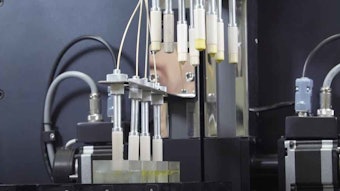Alternative ingredients to preserve cosmetics and personal care products are continuously sought. In relation, a recent patent application (WO/2014/164418) describes functionalized nanoparticles with improved efficacies for various applications, including preservation. These lignin and cellulose-based environmentally benign nanoparticles (EbNPs) deliver higher efficiency, in terms of active agent employed, in comparison with persistent nanoparticle systems. For example, silver ion-infused EbNPs with a positive surface charge (Ag-EbNP-PDADMAC) exhibit significantly higher antimicrobial activity, in terms of Ag equivalent, than other silver nanoparticles against the human pathogens E. coli and P. aeruginosa. These ebNPs and a novel approach to fabricate them will be the focus of a presentation by Alexander Richter during the Cosmetics & Toiletries Summit, to be held June 22 and 23, 2015, at the University of Pennsylvania in Philadelphia.
Richter Biography
Alexander Richter is a chemical engineering doctoral candidate at North Carolina State University. He earned his B.S. in Environmental/Biotechnology Engineering with an emphasis on Environmental Engineering at MCI University—The Entrepreneurial School, Austria, in 2009. He received his M.S. in Chemical Engineering from North Carolina State University in 2012, where he is currently pursuing his PhD.
Richter was selected as one of seven graduate finalists in the 2013 Collegiate Inventors Competition. Advised by Orlin Velev, PhD, INVISTA Professor of Chemical and Biomolecular Engineering, Richter was nominated for his project, “Silver Nanoparticles Without Metal: A New Generation of Environmentally Benign Antimicrobials.” His project focused on functionalizing biopolymer nanoparticles with silver to kill drug-resistant bacteria, fungi and viruses, and to be used as antimicrobials. Further, his work aims to assist in replacing non-biodegradable nanosystems with environmentally benign, biopolymer-based ones. Built from lignin and cellulose, his group's nanoparticle technologies are biodegradable, environmentally benign, and may also potentially be employed as foam and emulsion stabilizers; as drug delivery systems; and as matrices for environmental remediation systems.
About C&T Summit
The C&T Summit is an interactive two-day event, designed to spark innovation and inspire the creative utilization of science in cosmetic product development. It will be held June 22 and 23, 2015, at the University of Pennsylvania in Philadelphia. Featuring a high-level technical conference and hands-on, practical application workshops, the C&T Summit provides an experiential learning environment, aiming to transfer knowledge through participation. For more information on the program, sign up for our mailing list or visit Summit.CosmeticsandToiletries.com.










